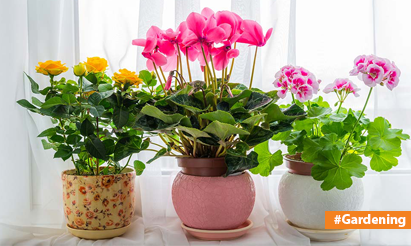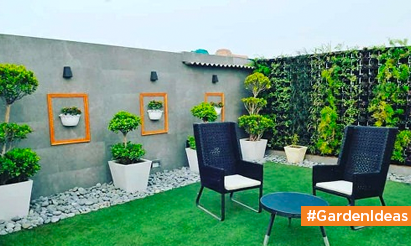5 Advice on Making Your Yard Eco-friendlier with Sustainable Gardening
So, what does it mean to garden in a sustainable manner? There really is no actual definition, however, the goal is to reduce the human effect on the environment.
Eliminating toxic substances, conserving natural resources, and eliminating waste whenever feasible are all examples of sustainable practises at home. If you want to start gardening in a more sustainable fashion, you don’t have to make drastic changes straight away; and something as basic as using organic weed killers rather than pesticides will benefit the earth. These environmentally friendly gardening ideas will assist you in making the world a happier and healthier place.
1. Use organic gardening techniques.
Organic gardening is a crucial component of long-term gardening. It is more environmentally friendly and cost-effective to use less chemicals in your garden. Gardening organically is even more vital if you’re producing food for your family. Begin from the bottom up by creating nutrient-rich soil and amending it with organic manure. If you find pest insects or plant disease in your garden, use organic remedies to remedy them.
2. Mulch Your Garden
Mulching is not only a terrific technique to keep weeds out of your garden, but it also helps to keep soil moisture content. This is extremely vital in locations where watering is restricted. Mulch your garden beds and landscape plants with a 2 to 3-inch layer of the mulch of your choosing. Shredded bark, cocoa bean hulls, pine needles, grass clippings, and coir are all good mulch choices for ecological landscaping.
3. Use native plants
Understanding what plants to utilise when growing a sustainable garden is essential. Local plants, often known as sustainable plants, are ones that are native to your area. Since they are perfectly matched to your temperature, precipitation, and soil composition, such plants require less care, demand less water, and grow faster than other plants. Insect and bird populations in the area rely on native plant species for food and refuge.
4. Get Rid of Your Lawn (Or Part of It)
It takes a great deal of energy to maintain a beautiful, green, and weed-free lawn. Many lawns require water and fertiliser to be in good health. Reduce the amount of grass in your landscaping and replace it with simple perennial decorative grasslands, low-growing shrubs, or groundcovers for a more sustainable look.
5. Use Less Water
Water conservation is critical for long-term sustainability, particularly in locations where water is scarce. A broad selection of appealing drought-tolerant shrubs and perennials are used in xeriscaping, a style of gardening and landscaping that lowers the need for irrigation. Build a rain barrel at the base of one or more of your downspouts to fetch water from Mother Nature to use on your plants.
Disclaimer: The views expressed above are for informational purposes only based on industry reports and related news stories. PropertyPistol does not guarantee the accuracy, completeness, or reliability of the information and shall not be held responsible for any action taken based on the published information.




